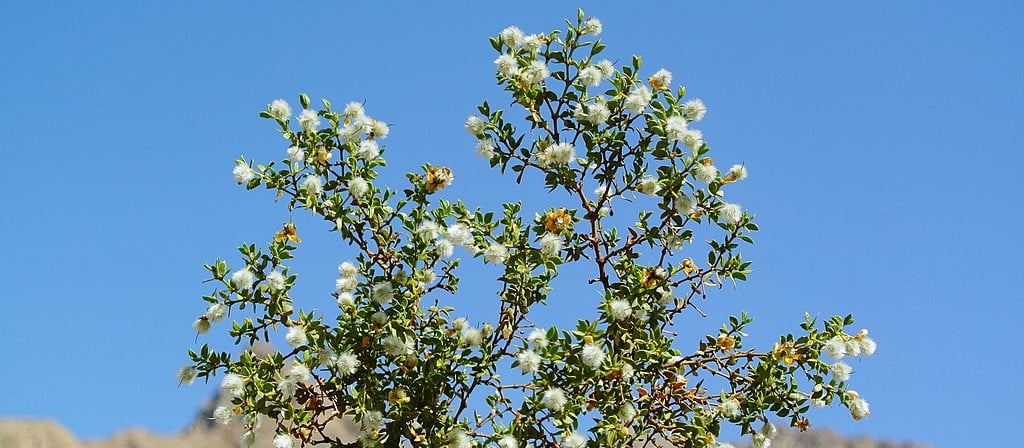
Chaparral in Bloodroot Salve
Chaparral leaf has long-lasting anti-inflammatory and analgesic effects, as well as germicidal action. It supports the immune system, which is vital in the action of Bloodroot Salve.
It is widely used as a tea and in the treatment of rheumatoid arthritis, and can have a remarkable healing effect when applied to the skin. It helps treat eczema and psoriasis and is an excellent antiseptic, and also contains the powerful anti-oxidant NDGA.
Background
Chaparral (Larrea tridentata) is a shrub from the Southwest part of the U.S., northern Mexico and western South America. It has a long history of multicultural usage, among which is cancer. There have been some serious examinations and biological studies done on the plant: it seems to help combat simple skin cancer. Moore, M. (1989) Medicinal plants of the desert and canyon
For hundreds of years, Larrea tridentata has been used by the Native Americans as a medicinal aid for a multitude of afflictions, including cancers. The Native Americans were very skilled in preparing and administering the herb, using it in many preparations.
Liver toxicity from Chaparral?
Allegations surfaced in 1992 of liver toxicity caused by chaparral consumption, and manufacturers voluntarily restricted sales until reports were investigated. A panel of medical experts found no clinical data to indicate that it was inherently a liver toxin. In late 1994, this report was submitted to the FDA and chaparral was given a clean bill of health by the American Herbal Products Association. (Quote from Arizona Natural).
Also, see
- Bloodwort
- Ingredients of Bloodroot Salve
- Success Stories
- History of Bloodroot Salve
- Chaparral on Wikipedia
